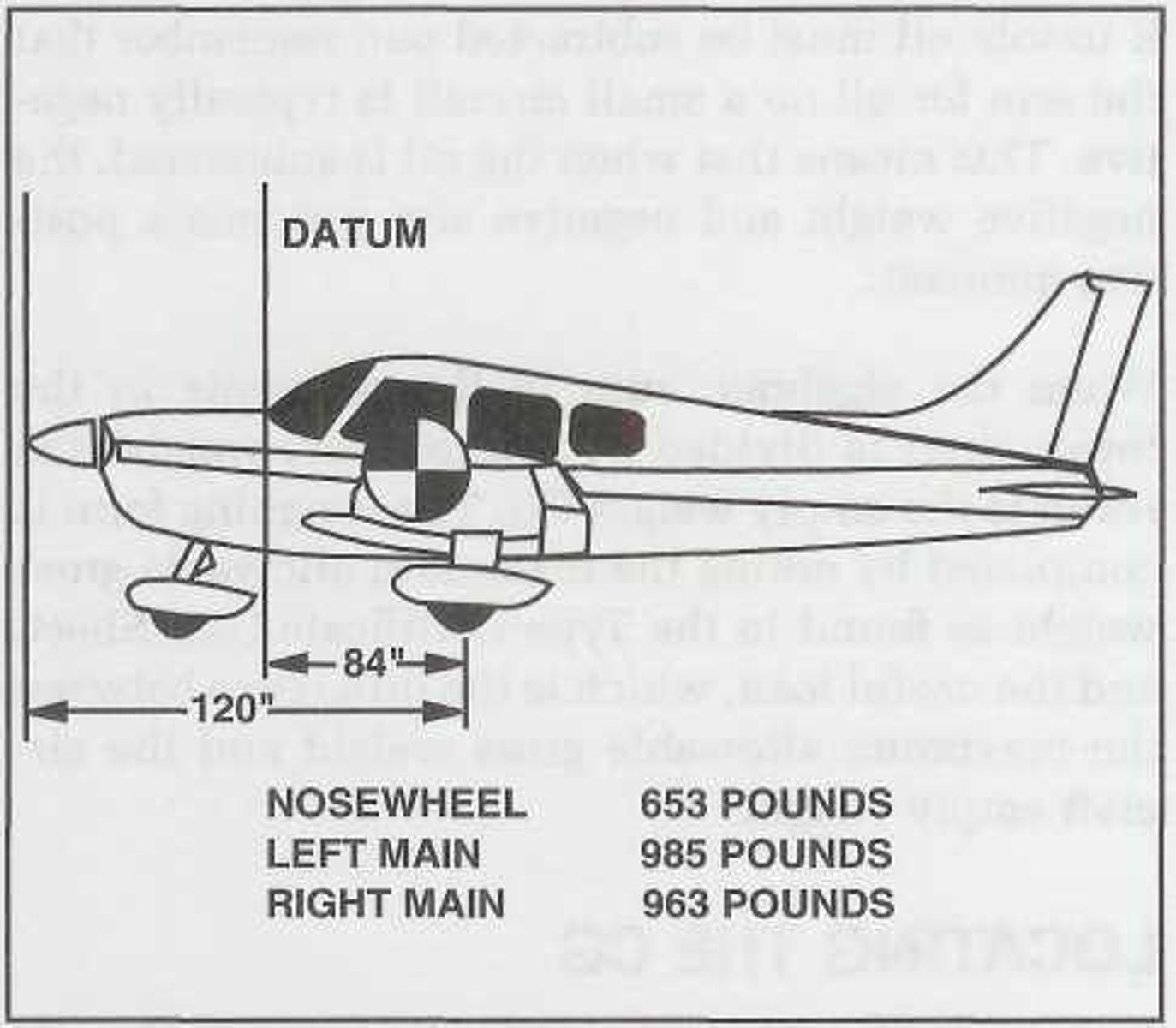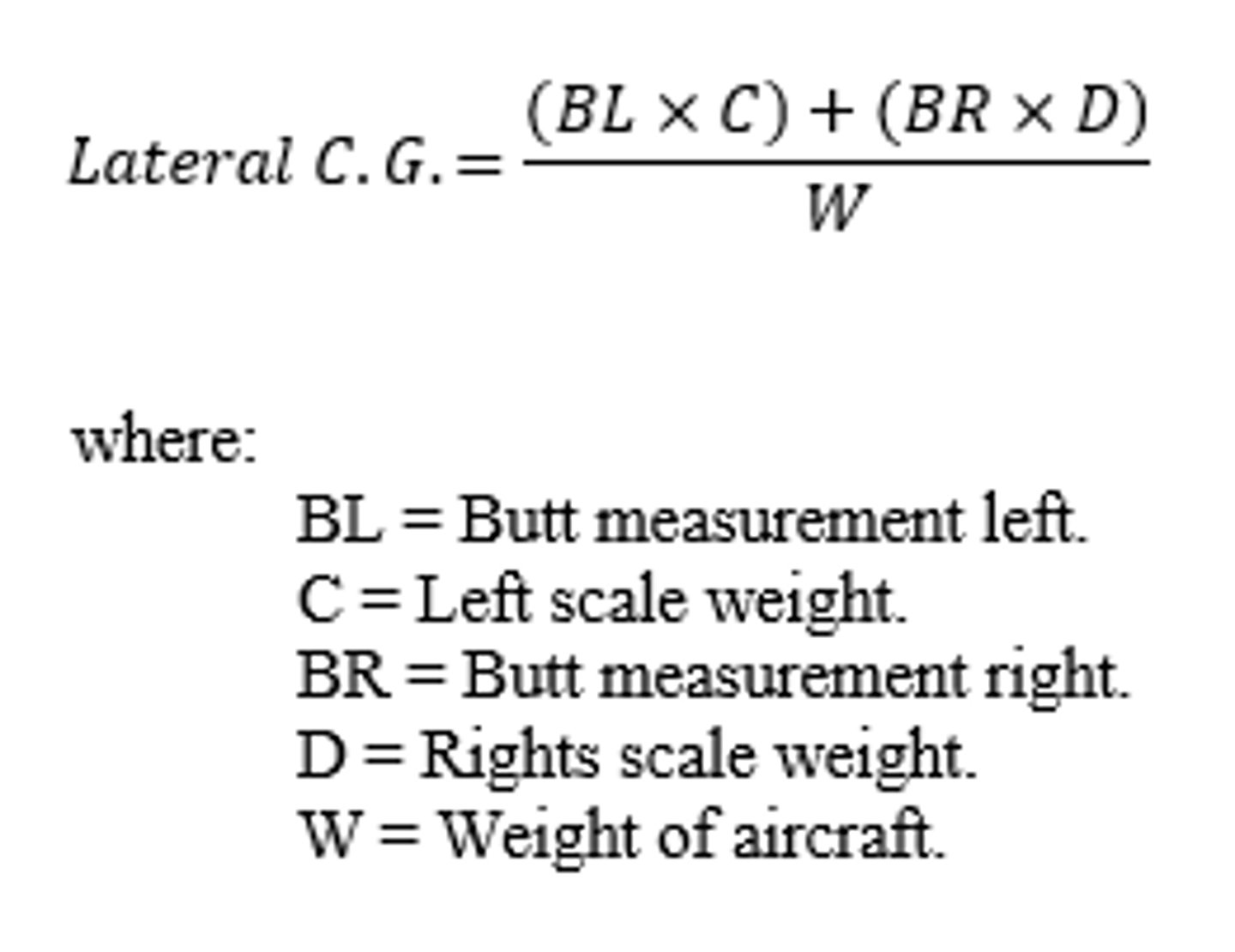Jeppesen 06 - Weight & Balance
1/99
There's no tags or description
Looks like no tags are added yet.
Name | Mastery | Learn | Test | Matching | Spaced |
|---|
No study sessions yet.
100 Terms
170 pounds per person.
Crew & Passengers.
190 pounds for utility/aerobatic aircraft.
Crew & Passengers.
Basic empty weight.
The weight of the standard aircraft, any optional or special equipment, fixed ballast, unusable fuel, and full operating fluids including oil, hydraulic fluid, and other fluids required for normal operation of aircraft systems except potable water, lavatory precharge water, and water intended for injection in the engines.
Licensed empty weight.
Aircraft certified prior to March 1, 1978, might use this term which is similar to basic empty weight except that it does not include full engine oil. Includes only the weight of undrainable oil.
Type Certificate Data Sheets (TCDS).
When in question as to what operating fluids are included in the empty weight, what document should you refer to?
Standard empty weight.
This is simply the weight of an aircraft without optional equipment, and is obtained from aircraft manufacturers.
6 pounds per gallon.
Avgas.
6.7 pounds per gallon.
Turbine fuel.
7.5 pounds per gallon.
Lubricating oil.
8.35 pounds per gallon.
Water.
170 pounds per person.
Crew & Passengers.
190 pounds for utility/aerobatic aircraft.
Crew & Passengers.
FAR Part 135.
What FAR Part covers air taxi operators and commercial operators of small aircraft?
170 pounds per person.
Adults (summer).
175 pounds per person
Adults (winter).
170 pounds per person.
Flight crew (male).
150 pounds per person.
Flight crew (female).
130 pounds per person.
Female flight attendants.
150 pounds per person.
Male flight attendants.
23.5 pounds per item.
Check-in baggage.
10 pounds per item.
Carry-on baggage.
Payload.
Refers to the weight of the flight crew, passengers, and any cargo or baggage.
Useful load.
It is the difference between maximum takeoff weight and basic empty weight.
Useful load.
It includes payload, usable fuel, and full operating fluids.
Usable fuel.
It is the fuel available for the flight. It does not include unusable fuel.
Unusable fuel.
It is the quantity of fuel that cannot be safely used during flight.
Zero fuel weight.
It is the operational weight of the aircraft including the payload but excluding the fuel load.
Zero fuel weight.
Basic Empty Weight + Payload.
Ramp weight.
Zero Fuel Weight + Usable Fuel.
Takeoff weight.
Ramp Weight - Fuel Used for Start, Taxi, and Engine Runup.
Landing weight.
Takeoff Weight - Fuel Used During Flight.
Maximum ramp weight.
It is the maximum weight approved for ground operations.
Maximum takeoff weight.
It is the maximum weight approved for the start of the takeoff roll.
Maximum landing weight.
It is the maximum allowable weight at which an aircraft can be landed.
Maximum weight.
It is the authorized weight of the aircraft and its contents as indicated in the aircraft specifications.
Scale weight.
It represents the reading taken from the scales. It includes the weight of all items on the scales including the aircraft, chocks, and jacks.
Tare weight.
It includes the weight of all items on the scales that are not part of the aircraft such as jacks, blocks, and chocks.
Net weight.
Scale Weight - Tare Weight.
Issued a computed weight and balance report based on the averaged figures of aircraft that are actually weighed.
A manufacturer is required to weigh one aircraft out of each 10 produced (1:10). What happens to the remaining nine aircraft?
Aircraft's permanent weight and balance records.
Where should an aircraft maintenance technician enter information regarding any equipment changes and modifications for an aircraft placed in service?
Center of gravity (CG).
It is the point along an aircraft's longitudinal axis at which an aircraft's weight is considered to be concentrated.
Center of gravity range (CG range).
It is the distance between the most forward and rearward CG limits.
Pilot.
Who is responsible to know before each flight that the aircraft is properly loaded, that it does not exceed the allowable gross weight, and that the CG is within the allowable range?
Aviation maintenance technician (AMT).
Who is responsible to see that the permanent aircraft records reflect the changes that happen to the weight of an aircraft during its operational life?
When the CG is at the aft limit, stabilator effectiveness is adequate; but, when the CG is beyond the aft limit, the stabilator may be ineffective for stall or spin recovery.
Which statement best describes stabilator effectiveness when the CG is at the aft limit?
Datum.
It is an imaginary vertical plane from which all horizontal measurements are taken with the aircraft in a level flight attitude.
Sits at a right angle to the aircraft's longitudinal axis.
Where does the reference datum usually sit on the aircraft's longitudinal axis?
Aircraft Specifications or Type Certificate Data Sheets (TCDS).
For each aircraft make and model, the location of all items including equipment, tanks, baggage compartments, seats, engines, and propellers are listed in what documents?
Visualize a playground teeter-totter.
What is the method usually used in understanding weight and balance?
Balance point.
The point in an object about which the algebraic sum of all moments is equal to zero is called ________________.
Clean the aircraft inside out and a check of the equipment list must be made.
What is the first step to be done before weighing an aircraft?
Fill fuel tanks completely and then subtract out the weight of the usable fuel as specified in the Type Certificate Data Sheets.
Due to the impracticality of draining fuel tanks, what action is permissible during aircraft weighing?
Temperature.
Fuel weight varies with ________ and should always be taken when the aircraft is weighed.
The sumps should be filled and the weight deducted from the scale weight.
Due to the impracticality of draining oil sumps, what action is permissible during aircraft weighing?
Quarts.
The amount of oil required is typically given in what unit of measurement?
Aircraft Specifications or the manufacturer's maintenance manual.
What document should you refer to determine flight controls and seat positions prior to aircraft weighing?
Weighing points.
These are specific points on an aircraft where the scales must be placed for weighing.
Type Certificate Data Sheets (TCDS).
What document should you refer to locate the weighing points of an aircraft?
Platform scales.
This scale is normally used with smaller aircraft. With this type of scale, aircraft are typically lifted off the floor with jacks and then lowered onto platform scales that are placed under each wheel.
Load cells.
Larger aircraft are weighed by placing _____________ between the jack and the jack-pad of the aircraft. These are strain-gauge capsules whose resistance changes proportionally to the amount of load imposed on them. An electronic bridge circuit converts this change in resistance into the aircraft weight readout.
Type Certificate Data Sheets (TCDS).
Prior to recording the scale weights, an aircraft must be leveled according to instructions in the:
Longitudinal level.
This level is the most important condition when weighing.
Weighing form.
It is useful to systematically record all information for weight and balance.
The arm for oil on a small aircraft is typically negative.
Which statement is true regarding aircraft weighing if usable oil must be subtracted out?
Using the centerline of the main wheels as a reference.
What is sometimes the most convenient way to locate the datum and CG?
53.87 inches.
Determine the CG location of the given aircraft.

Percent of the mean aerodynamic chord (%MAC) of the wing.
The CG location in a transport aircraft is given in terms of?
Mean aerodynamic chord (MAC).
It is the chord drawn through the center of the wing plan area.
Weight and balance and aerodynamic purposes.
What is the purpose of determining mean aerodynamic chord?
Type Certificate Data Sheets (TCDS) or the manufacturer's maintenance manual.
Where can the length of the MAC established by the manufacturer be found?
Aviation maintenance technician (AMT).
Who is responsible to ensure that weight and balance information for an aircraft is correct and updated?
Moment index.
To make weight and balance computations easier, a reduction factor is applied to all moments. This results in what is called ________________.
FAR Part 135.
This FAR Part dictates that passenger and cargo manifests be completed before each flight.
Moment index chart.
The moment indexes of actual or standard weights are calculated by using:
Permanent Ballast.
It is permanently installed in an aircraft and must not be removed.
Temporary ballast.
It is typically installed to bring the CG within its range for a specific flight condition.
Ballast.
The formula shown is:

Weight shifted.
The formula shown is:

Empty weight center of gravity.
What type of C.G. must a technician find first after altering an aircraft?
Determine if an adverse-loaded condition exists.
What practice should be done after shifting weights if the new CG does not fall within the empty weight CG range?
Compute a forward adverse-loading check, a rearward adverse-loading check, and a maximum gross weight check.
Which statement is true when determining if an adverse-loaded condition exists?
Minimum fuel.
It is the amount of fuel that must be shown on the weight and balance report when the aircraft is loaded for an extreme condition check.
Engine horsepower.
The minimum fuel load for a small aircraft with a reciprocating engine is based on
METO horsepower.
It is the figure used when the fuel load must be reduced to obtain the most critical loading on the CG limit being investigated for a small aircraft with a reciprocating engine.
Maximum except take-off.
What does METO horsepower mean?
Type Certificate Data Sheets (TCDS).
What publication does an aircraft's METO rating can be normally found?
Calculating minimum fuel directly to gallons.
The formula shown is:

Calculating minimum fuel directly to pounds.
The formula shown is:

It is specified by the aircraft manufacturer.
How do you calculate the minimum fuel required for an adverse CG check for turbine aircraft?
Forward adverse-loading check.
To determine if it is possible to legally load an aircraft in such a way that its CG falls ahead of the forward limit, you must load everything ahead of the forward limit to its maximum weight, and everything aft of the forward CG to a minimum weight.
Rearward adverse-loading check.
It is accomplished in the same manner as the forward adverse-loading check but everything aft of the rearward CG limit is loaded to a maximum while everything forward of the aft limit is loaded to a minimum.
Maximum gross weight check.
The reason for doing this check is to determine if it is possible to load the aircraft in such a way that the aircraft's gross weight can be exceeded. It is accomplished by loading everything with the maximum possible.
The aircraft must be placarded to indicate the condition.
What action must be done if the conditions of any adverse-loading check is not within the CG range?
It has less ability to withstand shocks and additional loads caused by turbulent air.
Which statement is true regarding the maximum gross weight of any given helicopter?
In addition to computing the weight and CG for the longitudinal axis, you must compute it for the lateral axis as well.
Which statement best describes the difference of computing the weight and C.G. of helicopters contrast to airplanes?
Most helicopters have a much smaller CG range than airplanes.
Which statement is true regarding the C.G. range of helicopters?
It acts as a pendulum suspended from the rotor.
Which statement best describes the motion of helicopter fuselages during flight?
Only cyclic adjustments would be required to compensate for the wind.
Ideally, a helicopter should have such perfect balance that the fuselage remains horizontal while in hover. What are the only adjustments that could be done in this situation?
Helicopter empty weight C.G. (longitudinal).
The formula shown is:

Helicopter lateral C.G.
The formula shown is:
